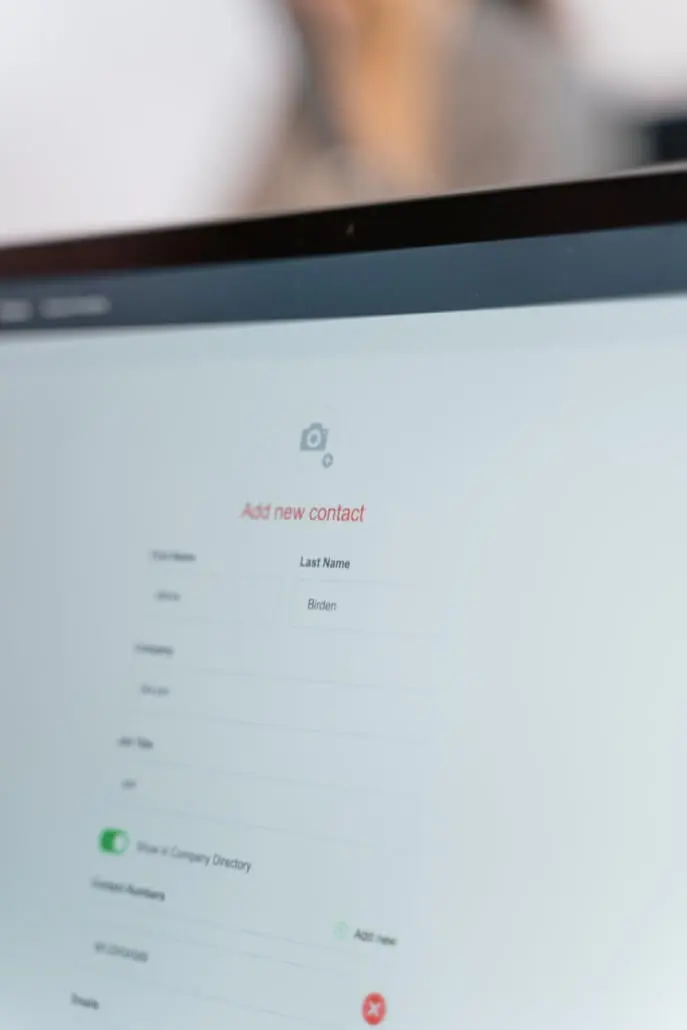Originally published December 28, 2022 , updated on January 16, 2023
Before landing on this page, you might have typed “organic traffic strategy” into the search engine. This post was somewhere in the slurry of websites that showed up after that, and voilà – here you are.
Finding this page didn’t just happen by chance. We created the post for this exact reason, and we’re confident we can help you become better at generating organic traffic. If you’re unsure how websites end up on the coveted first search engine results pages (SERPs), read on.
Becoming a high-ranking website may seem daunting, no matter how big or small your business is. It’s a common challenge for large-scale enterprises as much as it is for new and small startups. But improving your organic website traffic is less intimidating once you know a couple of tricks.
So, how can you boost your organic website traffic? We share seven key strategies.
What Is Organic Search?
Organic search results are unpaid listings on the SERPs, which drive about 53% of all search traffic. Growing your organic search rankings can play a significant role in generating quality leads. Focusing on organic traffic also delivers results over the long term and builds customer trust.

Moreover, research shows that organic search results generate 8.5 clicks for every paid click. The fact that it’s cost-effecive is another reason why prioritising high organic search rankings is important.
But reaching success means frequently generating unique, valuable, SEO-optimised content. When creating content, it’s essential to consider how you’ll answer people’s search queries. In addition, your content should be useful and credible, as this could mean others will start linking to it, further boosting the pages’ SEO value.
Strategies to Develop a Powerful Organic Traffic Strategy for Your Business
When users actively seek a solution, product or service by typing a query into a search engine like Google, the traffic that’s generated to a website is known as “inbound traffic”. This type of web traffic is linked to high-quality leads, says 60% of marketers.
Let’s take a look at strategies that can be used to drive high-quality inbound and organic traffic to your website.
Strategy 1: Create and Publish Quality Blogs
Websites with an active blog section generate 67% more leads and 434% more indexed pages than sites that don’t prioritise blog posts. Indexed pages have been visited, analysed, and added to a search engine’s database.
Here’s how to get started on creating high-performing blog posts:
Create Buyer Personas
Pulling in the right target audience is simpler when you clearly understand who you’re writing for. Establishing buyer personas and using them to inform the kind of content you produce will help keep your blog section relevant to target customers.
Each persona represents a typical customer. Think carefully about what these typical customers want, need, and expect when browsing or searching for products and services online, and create your content accordingly.
Optimise Your Content for SEO

The next step is to use keyword research tools to identify long-tail keywords relevant to your business. This step is often best done with the help of an agency.
Tools like SEMRush and Google Keyword Planner can inform the keyword strategy for your business. Ask your agency to report on factors like monthly search volume (an estimate of the number of times a query is searched for every month), keyword difficulty (a metric that helps determine the difficulty of ranking for a keyword), and intent (the purpose of the online search).
After evaluating these factors, you can finalise your list of long-tail keywords to include in the entire blog section on your website and use them throughout your content. Remember to include these keywords in title tags (featured in the browser title bar and SERPs), meta descriptions (a summary of the web page in SERPs), titles, body text, image titles, subheadings, alt text on images, and URLs.
Leverage Crosslinking and Backlinking
Interlink between pages to keep visitors on your website for longer. Vary the words you use when interlinking to the same article, as using identical text for internal links might negatively impact SEO.
Backlinks from other established sites will also make a massive difference in your pages’ rankings. Creating shareable, quality content and partnering with other authoritative websites to publish your content can boost your SEO.
Strategy 2: Build and Engage With a Social Community
Regularly posting on social media channels should be part of your organic traffic strategy. Your business can engage with customers on platforms such as Facebook and LinkedIn to build a community and entice target customers to visit your website.
The first step is to identify the social media platform where your target customers are likely to spend most of their time. Your business can get this information in many ways. You can, for example, do a competitor analysis, social media demographics analysis, or a customer survey.
Once you’ve identified the right social media platforms for your brand, creating a consistent tone and style across all platforms is crucial. Make sure to link your profiles across platforms to increase engagement.
Additionally, you can engage customers by:
- Publishing posts regularly to make you the authority on a chosen topic
- Announcing prizes and giveaways to incentivise people to engage with your brand
- Encouraging customers to promote your business on their profiles with referral systems
- Leveraging social commerce by providing crisp product descriptions and engaging visuals
Strategy 3: Create Effective Landing Pages
A landing page is a standalone web page that converts visitors into leads when optimised. The average conversion of landing pages across industries is 9.7%, so prioritising them is essential.
Conduct keyword research and analyse competitor pages, customer needs, and industry trends to ensure your pages rank on the SERPs. Seventy percent of all web search traffic comprises long-tail keywords. Use long-tail keywords that reflect user intent to rank for relevant terms as they provide faster results (they’re less competitive).
Once customers have landed on your pages, you want them engaged. So create concise, persuasive copy for these key pages and add strong calls-to-actions (CTAs) that explain what users need to do next (e.g., “Contact us” or “Shop now”).
Strategy 4: Use Whitepapers To Establish Thought Leadership
Whitepapers are persuasive, authoritative reports on topics that provide solutions to target customers’ problems. Well-researched whitepapers can show readers that you’re reliable, experienced, and adept in a specific area. In addition, due to the length and breadth of the topics covered, they can help you increase backlinks (others may want to link to your papers), establish yourself as a thought leader, and boost your brand reputation.
To make white papers part of your organic traffic strategy, explore the keyword search volume for different industry-related topics. Next, develop content on subjects with higher search volume to engage with more customers.
Note that you can also repurpose older whitepapers. Refresh these papers with the latest research and stats, and you’ll quickly have more valuable documents to share with target customers. Your business can also analyse previous whitepaper landing pages to see which ones got the most visitors. Then, expand upon the popular topics to develop more white papers that deliver valuable content.
It’s also worth partnering with an agency that offers SEO traffic generation services to increase your whitepapers’ online visibility. You can distribute them through advertising, blog posts, newsletters, email signatures, and social posts.
Strategy 5: Build a Valuable Contact List

Email marketing can bring highly targeted and interested customers to your site. There are two primary ways to build an email list as part of your organic traffic strategy:
- Provide content with extremely high value to the customer, so they exchange their contact details with you. Customers can download whitepapers, e-books, and reports from your business’s website in exchange for their contact details.
- Make it easy to sign up for your newsletter on your site. Also, promote your newsletters on social media and incentivise web visitors to sign up for your mailers by offering freebies (e.g. a free webinar).
Once you have a database, you can start interacting with these subscribers. For example, surveys can be used to gather more user insights and learn about topics that interest them. You can then personalise your newsletters and segment your database to provide subscribers more targeted, valuable content.
Strategy 6: Establish a Presence With Affiliate Marketing
Affiliate marketing allows the company that publishes your content to earn a commission whenever a sale occurs. The transaction occurs through a unique link between you, the client, and the affiliate partner.
The affiliate marketing relationship is mutually beneficial. Your company gets visibility and access to a new customer base; the affiliate partner can share valuable content on their website or social pages. In exchange, they receive a commission whenever a customer makes a purchase.
There are many ways to make people aware of your products or services with the help of affiliate marketing. The first is guest blogs. Your business can publish high-quality blog posts on established sites. Alternatively, guest bloggers can publish content on your site and share links on their channels to increase website traffic.
Your business can provide affiliate marketing plan information on your website. Leverage comments on social media, websites, and blogs to provide links to the program. Joining social media communities relevant to your industry also puts you in touch with the relevant target audience.
Step 7: Building a Robust SEO Strategy
Optimising your website content for search will help you bring in more organic traffic. An essential part of this strategy is to analyse competitors’ top pages. This analysis enables you to learn about keyword gaps and establish how many pages and blog posts you should publish to beat them in terms of volume (an important ranking factor).
Here are a few tips:
- Add new web pages regularly.
- Ensure all your pages contain a minimum of 700 to 800 words each.
- Create and publish SEO-optimised content for every page of your website.
- Start blogging. The more frequently you add SEO-optimised blog posts to your website, the better.

How To Measure the Impact of Your Organic Traffic Strategy
If you’re using SEO traffic generation services such as those offered by Goodman Lantern, it’s important to measure your success. The below metrics can help you measure the results of your organic traffic strategy:
- Keyword rankings: This metric shows how your web pages rank for specific keywords.
- Number of visitors: This measures the total number of people visiting your website (typically measured per month).
- Average page views: this tells you the average page views per user session. It also provides information about the total number of pages viewed when a user visits your website.
- Bounce rate: This measures the number of people who leave your website without seeing any more pages. A high bounce rate will negatively impact your rankings.
- Average time on page: This indicates the average time users spend on a page. It measures whether they’re interested in the content you provided.
- Exit rate: This measures the number of exits from a page divided by the number of views for the same page.
Contact our team at Goodman Lantern today to develop a unique and effective organic traffic strategy for your business. Many clients across the globe are already using our organic SEO traffic generation services.
Post Views: 174



















